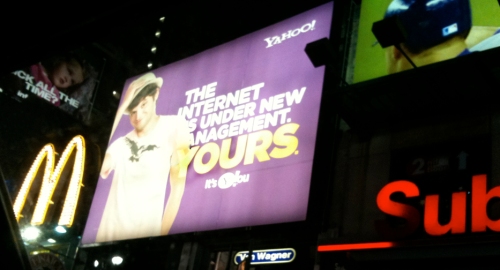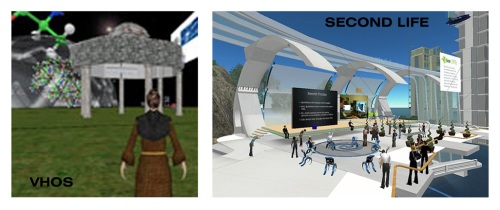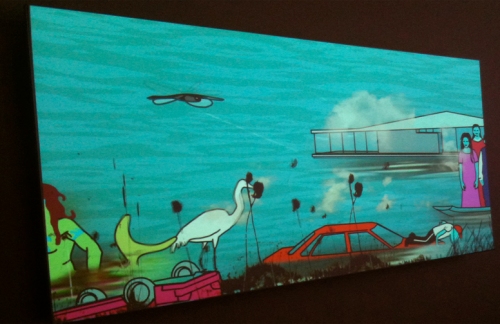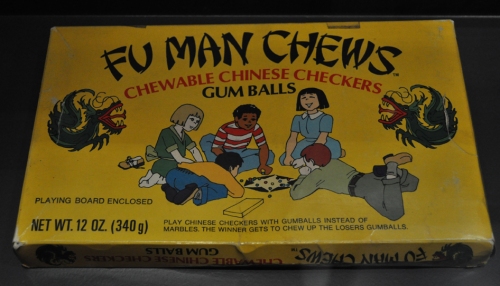Twitter has rapidly become one of the most widely used sources of infromation in the world. Just today I saw on the news that a company called Peek is going to start selling a device that looks like an iphone, just for twittering… its insane! In the corporate world maybe twitter is a good idea to get out ideas rapidly. For a person to tweet that they just tried a pair of jeans and noticed that she’s not the same size anymore… not so much. But we are here to talk about museums and twitter/facebook. Facebook is a global social networking website that is operated and privately owned by Facebook, Inc. Here is a list of the museums on Facebook. An article in The Art Newspaper proclaims that “Facebook is more than a fad- and museums need to learn from it” and museums should embrace the idea that “everyone is a curator”. I am attaching a portion below. Jim Richardson, is the managing director of Newscatle-based Sumo, a design consultancy specializing in arts and culture. Richardson published on the 202 issue of May 2009 after it was published online on April of the same year.
“Social networks and blogs are the fastest growing online activities, according to a report published in March by research firm Nielsen Online. Almost 10% of all time spent on the internet is spent on these types of sites, which Nielsen describes as “member communities”, and they are visited by more than two-thirds of the world’s online users.
This has not gone unnoticed by museums and galleries, with many creating some kind of presence on sites such as Facebook, Twitter and Flickr. But because this has primarily been done as a marketing tool, institutions are missing a far greater opportunity. By treading gently into the second generation of web development and design, known as Web 2.0, museums risk achieving little, and are effectively paying mere lip service to online social engagement. If they were to make a proper commitment to the enterprise, they could transform their relationship with audiences, change people’s perceptions of them and vastly expand the reach of their collections.
The Nielsen research shows that a major factor in the success of social networks is that they allow people to select and share content. This has become a hobby, even considered by some to be a serious creative outlet, with web users spending time “curating” their online space. Museums are well placed to appeal to this new generation of “curators” because they offer rich and interesting content that can be virtually “cut-up” and stuck back together online in numerous different ways to reflect the individual tastes of each user. If remixing, reinterpreting and sharing interesting content is, as Nielsen suggests, the kind of engaging interaction that draws people to social networks, then museums should embrace the idea that “everyone is a curator”, both online and offline.
Most of the institutions that are adapting their own websites with those facets of the social networks that so many people find attractive are in the US. The Museum of Modern Art (MoMA) in New York relaunched its website in March. It now includes links to the museum’s online users on various social networking sites such as Facebook, Twitter and YouTube. Users can also create personal online accounts, which allow them to bookmark upcoming events, create online exhibitions and “collect” works of art via their mobile phone as they walk around the gallery and view them later on the website.
Victor Samra, digital media marketing manager at MoMA, says: “It’s not enough just to broadcast information now. Sharing and participating in discussions are becoming normal activities on the web, so I think people are coming to expect it. People want to engage with content they are really passionate about, and museums have a great opportunity to provide this for them. This helps to change the perception of the museum as a building with four closed walls to an organisation with personality and a human face.”
One potential obstacle to museums sharing content online is the issue of copyright and how to protect images if they are put on the internet. Legal implications aside, from a practical point of view this approach is becoming outdated. For example, the Art Museum of Estonia has gone against convention by actively encouraging visitors to photograph its collection; the MoMA website helps users to co-create content and share these creations with friends.
All museums want to create a dialogue with their audiences, and most museum staff are well aware that the internet can be a useful tool for doing this. But museums such as MoMA that have wholeheartedly embraced the new digital environment are becoming part of the conversation, rather then just pushing content or questions at visitors and then sitting back. Online activity such as MoMA’s requires investment, both in terms of web development costs and staff time, but if this is where people are and how they are communicating, then, one can argue, museums should be there too.
Curators pride themselves on using their collections to analyse issues, provoke reactions and ask difficult questions. But these questions are no longer just being debated over a coffee or in the galleries themselves; they are also being discussed online, whether it is on social network sites such as Facebook, online discussion forums or the many blogs, and the content prompting these responses is no longer restricted to the four walls it actually inhabits. This means museums and galleries need to expand the sites where they introduce, narrate and edit their programmes.”
I believe this is truly a great article. But I would still like to throw out there the idea that keeps floating around my head… Can this all just become a big blur? Can all of this access, and participation actually make the museum disappear? There is a lot going on right now with museums and the web, in fact there is an international conference for culture and heritage on-line: Museums and the Web 2010, which is an annual conference exploring the social, cultural, design, technological, economic, and organizational issues of culture, science and heritage on-line. So the future of the museum and its relation to these social networking technologies is still very unclear, especially with all the speed of change that is occurring in the world.
Clarisa Llaneza






